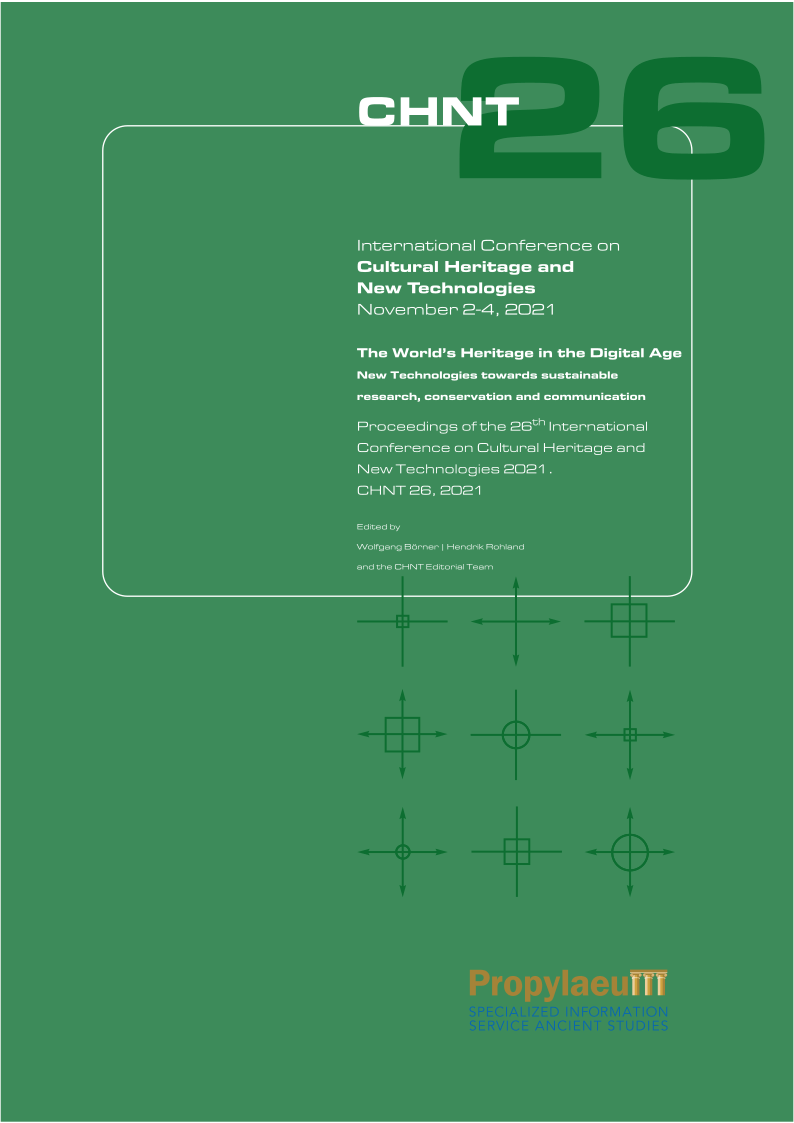Flying High! Combining Old with New Methods for Enhanced Airborne Prospection and Characterisation
Integrating UAV-based remote sensing with traditional survey methodologies
Keywords:
Aerial, Survey, Multispectral-, Lidar, UAVAbstract
Reference to aerial photographs and lidar imagery by trained specialists provides a well-established means of rapidly identifying and mapping archaeological monuments over large areas. In recent years emerging UAV technology has been integrated with a range of survey and imaging sensors, creating the opportunity to deploy UAV-based lidar, multispectral and thermal imaging in addition to traditional methodologies. Broadening the arsenal of techniques utilised within aerial survey methodologies may help to overcome some of the challenges commonly associated with individual techniques. This increases the chances of successfully identifying and characterising heritage assets across a range of landscapes during large-scale aerial mapping projects. This paper highlights some of the limitations faced by current aerial survey methodologies with reference to two case studies: an aerial investigation and mapping project focused on the Cheviot Hills in Northumberland, Great Britain (Holgate 2019) and an archaeological excavation undertaken as part of a large infrastructure project in the UK. It suggests ways in which these may be addressed and overcome through the incorporation of UAV-based remote sensing.
References
Burgess, C. B. (1984) ‘The Prehistoric Settlement of Northumberland: A Speculative Survey’, in Between and Be-yond the Walls: Essays on the Prehistory and History of North Britain in Honour of George Jobey Edinburgh: John Donald Publishers Ltd.
Gerrard, J. and Cooke, M. (2016) ‘Green waste and the Historic Environment’ British Archaeology 151, pp. 32-35.
Goodchild, J. (forthcoming) Northern Cheviot Hills Aerial Investigation and Mapping Project Historic England Re-search Report
James, K. Nichol, J. C. Wade, T. Cowley, D. Poole, G. S. Gray, A. and Gillespie, J. (2020) ‘Thermal and Multi-spectral Remote Sensing for the Detection and Analysis of Archaeologically Induced Crop Stress at a UK Site’, Drones 4 (4). DOI: https://doi.org/10.3390/drones4040061
Passmore, D. and Waddington, C. (2012b) Archaeology and Environment in Northumberland: Till Tweed Studies Volume 2 Oxford: Oxford Books
Powlesland, D. Lyell, S. J. Donoghue, D. and Hopkinson, G. (2006) ‘Beneath the sand - Remote sensing, archaeo-logy, aggregates and sustainability: A case study from Heslerton, the Vale of Pickering, north Yorkshire, UK’, Archaeological Prospection 13 (4), pp. 291-299.
Waddington, C. and Passmore, D. G. (2016) ‘Bronze Age settlement: some considerations in the light of recent re-sults’, in Crellin, R Fowler, C and Tipping, R (ed) Prehistory Without Borders. The Prehistoric Archaeology of the Tyne-Forth Region. Oxford: Oxbow Books
Winton, H (2019) ‘Standards for Aerial Investigation and Mapping Projects’ Historic England
Downloads
Published
Conference Proceedings Volume
Section
License
Copyright (c) 2025 Joel Goodchild, Roger Doonan, Robin Holgate, Clive Waddington

This work is licensed under a Creative Commons Attribution-ShareAlike 4.0 International License.
The CHNT older Proceedings are licensed under the creative commons license CC BY-NC-ND 3.0.
From the issue 26 on, they will be licensed under the creative commons license CC-BY-SA 4.0


